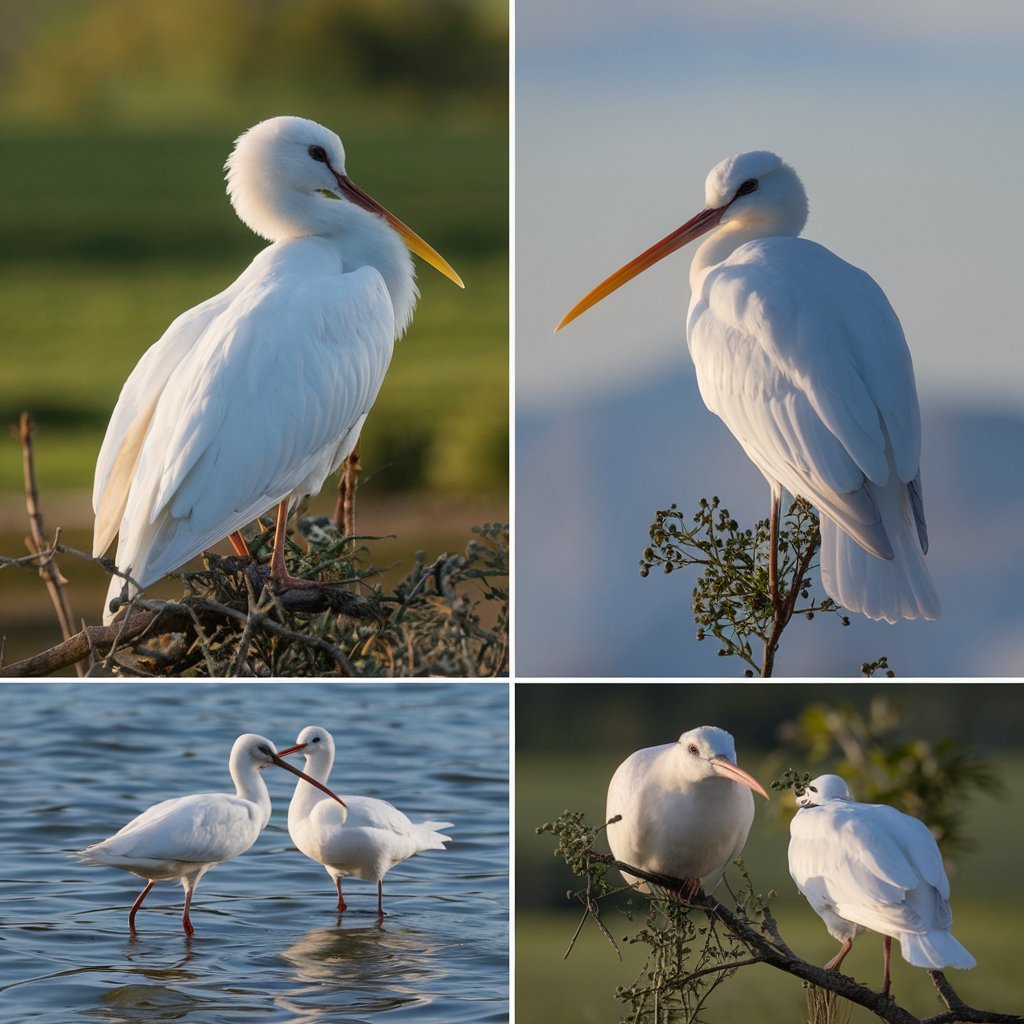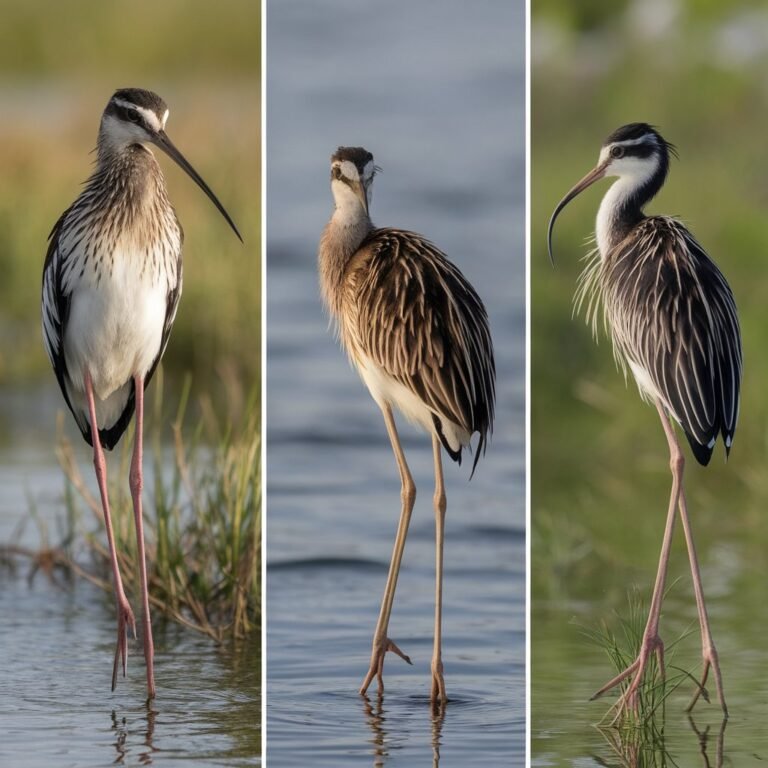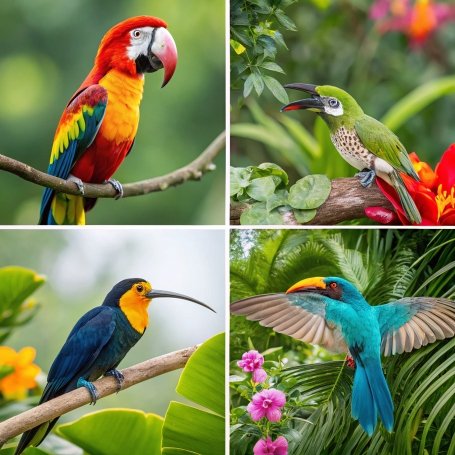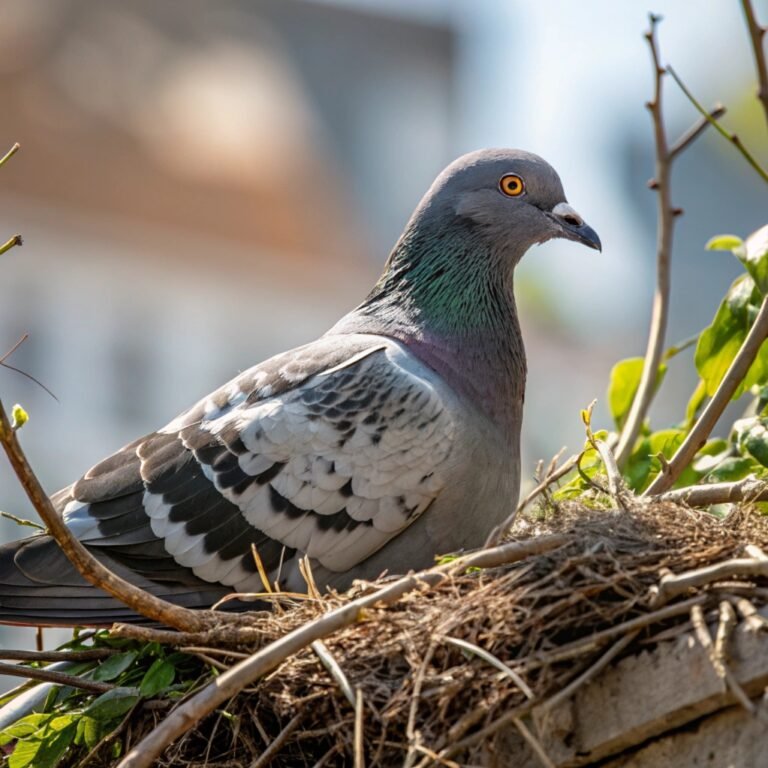12 Stunning Species of White Birds: A Comprehensive Guide
White birds have long captivated human imagination with their pristine plumage and graceful presence. These avian marvels span various species and families, each with its own unique characteristics and behaviors.
From the majestic swan gliding across serene lakes to the snowy owl perched silently in Arctic landscapes, white birds embody a sense of purity and elegance that resonates deeply with observers worldwide.
This comprehensive guide delves into the fascinating world of 12 remarkable white bird species, exploring their biology, behavior, and ecological significance.
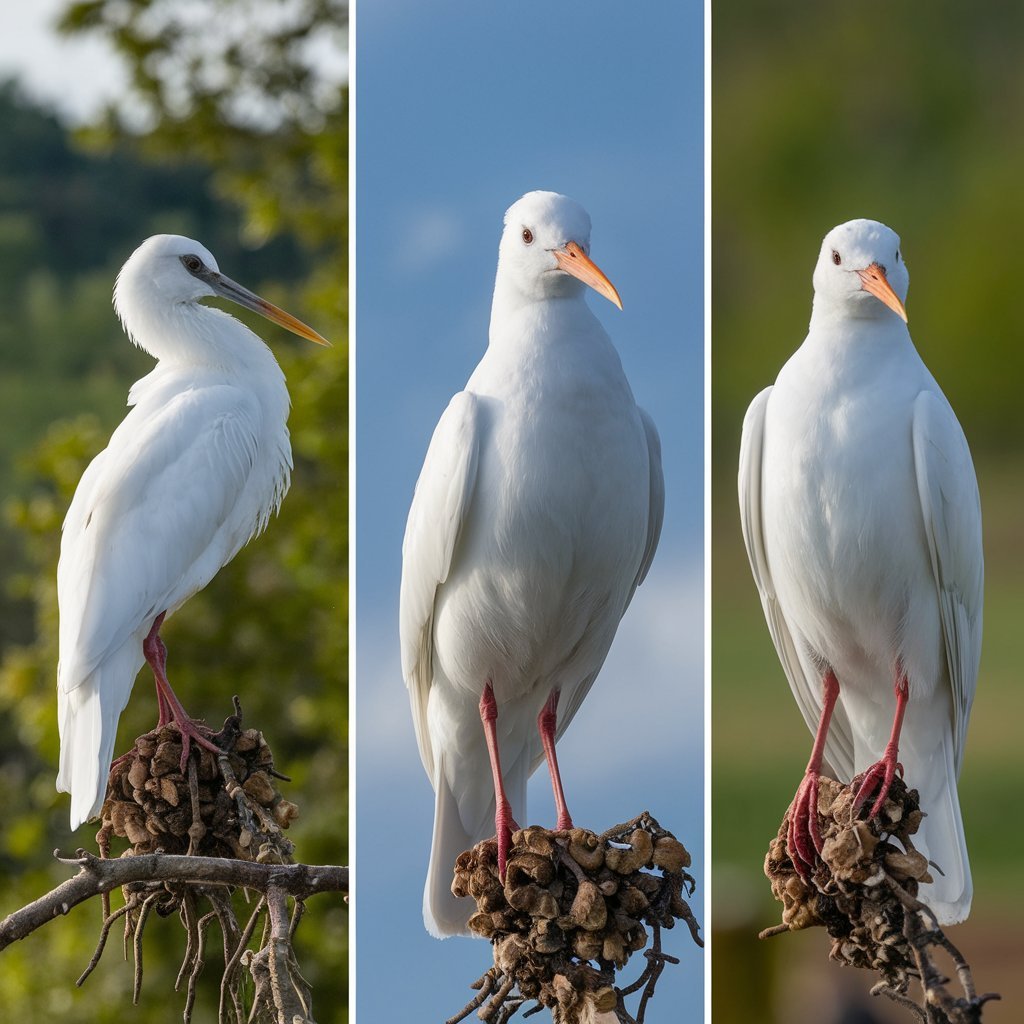
Key Takeaways
- White birds are found across various species and families, each with unique characteristics and behaviors.
- These birds often symbolize purity, peace, and elegance in many cultures and traditions.
- White plumage serves different purposes, including camouflage in snowy environments and social signaling.
- Many white bird species face conservation challenges due to habitat loss and climate change.
- White birds play crucial roles in their ecosystems as predators, prey, and seed dispersers.
- Some white birds, like the snowy owl, have adapted to harsh Arctic environments.
- Migration patterns vary among white bird species, with some undertaking long-distance journeys.
- Breeding behaviors of white birds range from monogamous partnerships to colonial nesting.
- White birds have inspired art, literature, and mythology across different cultures.
- Conservation efforts are crucial for protecting white bird populations and their habitats.
- Many white birds exhibit unique feeding strategies, from filter-feeding to precise hunting techniques.
- The study of white birds contributes significantly to our understanding of avian biology and ecology.
1. The Majestic Mute Swan (Cygnus olor)
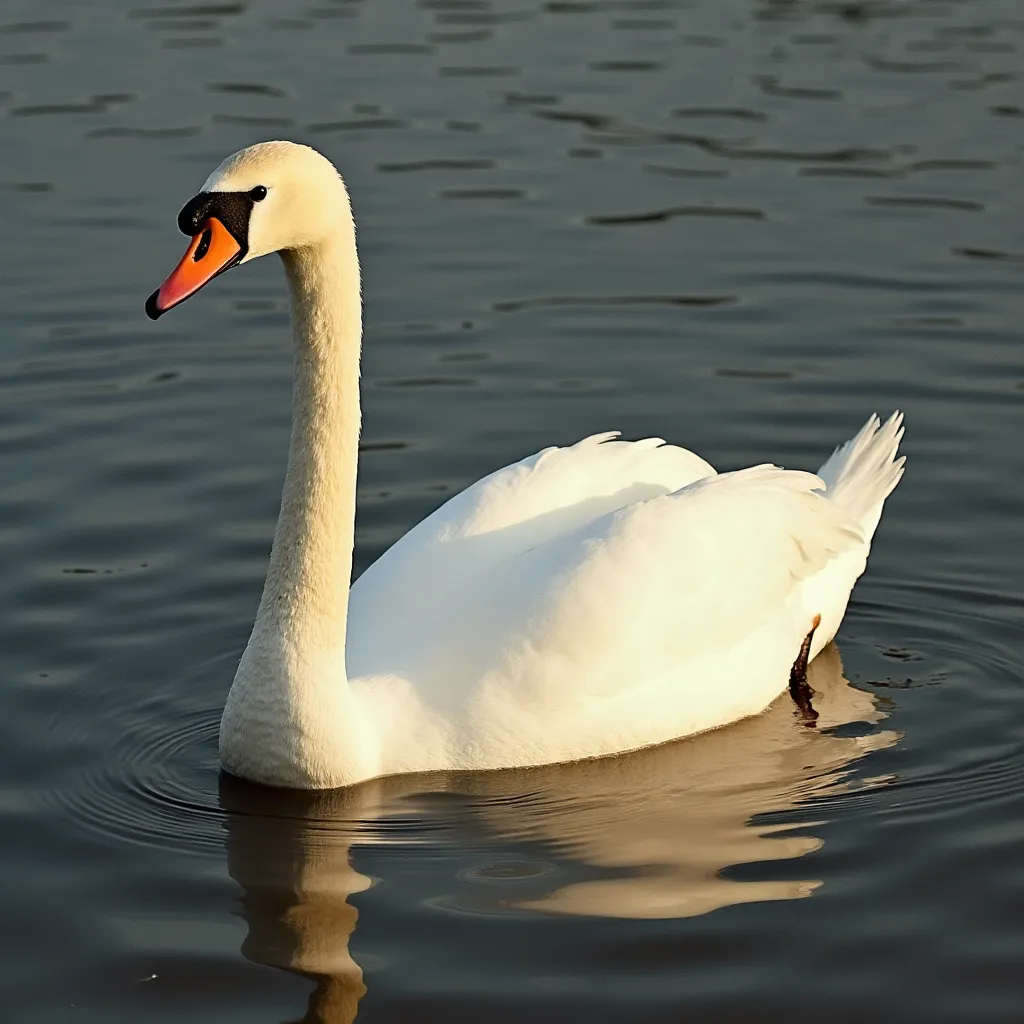
The Mute Swan stands as an iconic symbol of grace and beauty among white birds. With its long, curved neck and pure white plumage, this species captivates observers in parks, lakes, and rivers across Europe and North America.
Despite its name, the Mute Swan is not entirely silent, producing soft hisses and grunts. These birds form strong pair bonds, often mating for life, and are known for their protective nature, especially during breeding season.
Mute Swans play a significant role in aquatic ecosystems, influencing vegetation through their feeding habits. However, their introduction to non-native habitats has led to ecological concerns in some regions.
Conservation efforts focus on managing populations and protecting wetland habitats crucial for their survival. The Mute Swan’s elegant appearance and complex social behaviors continue to fascinate researchers and nature enthusiasts alike, making it a beloved subject of study and admiration.
2. The Arctic-Dwelling Snowy Owl (Bubo scandiacus)
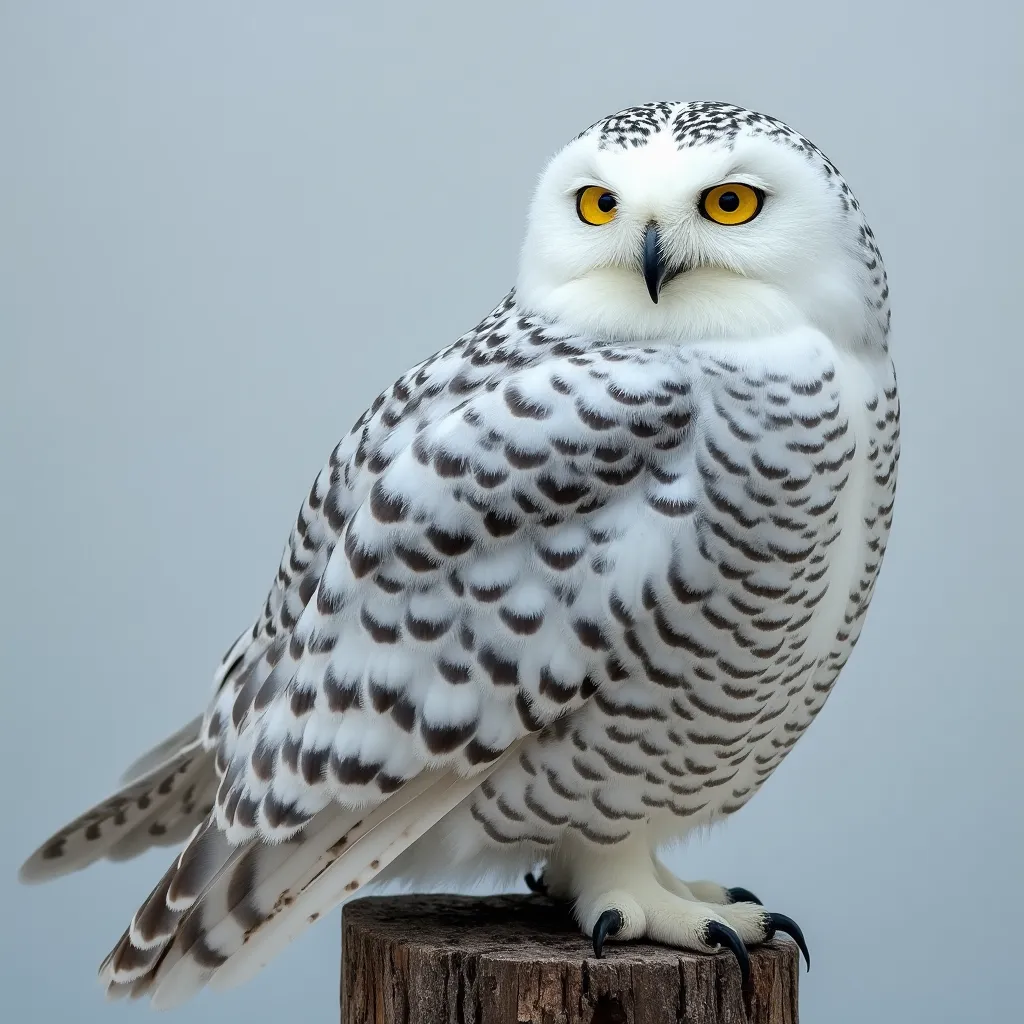
The Snowy Owl, with its striking white plumage and piercing yellow eyes, is a master of Arctic environments. This large owl species is renowned for its exceptional hunting skills and ability to thrive in harsh, cold climates.
Unlike many owl species, Snowy Owls are diurnal, active during the day, which allows them to take advantage of the continuous daylight in their Arctic breeding grounds.
Their white feathers provide excellent camouflage against snowy landscapes, crucial for both hunting and avoiding predators. Snowy Owls are nomadic, with their movements largely dictated by food availability, particularly lemmings, their primary prey.
Climate change poses a significant threat to their habitat and food sources, making conservation efforts critical. The Snowy Owl’s unique adaptations and behaviors make it a fascinating subject for researchers studying Arctic ecosystems and avian adaptations to extreme environments.
3. The Graceful Great Egret (Ardea alba)
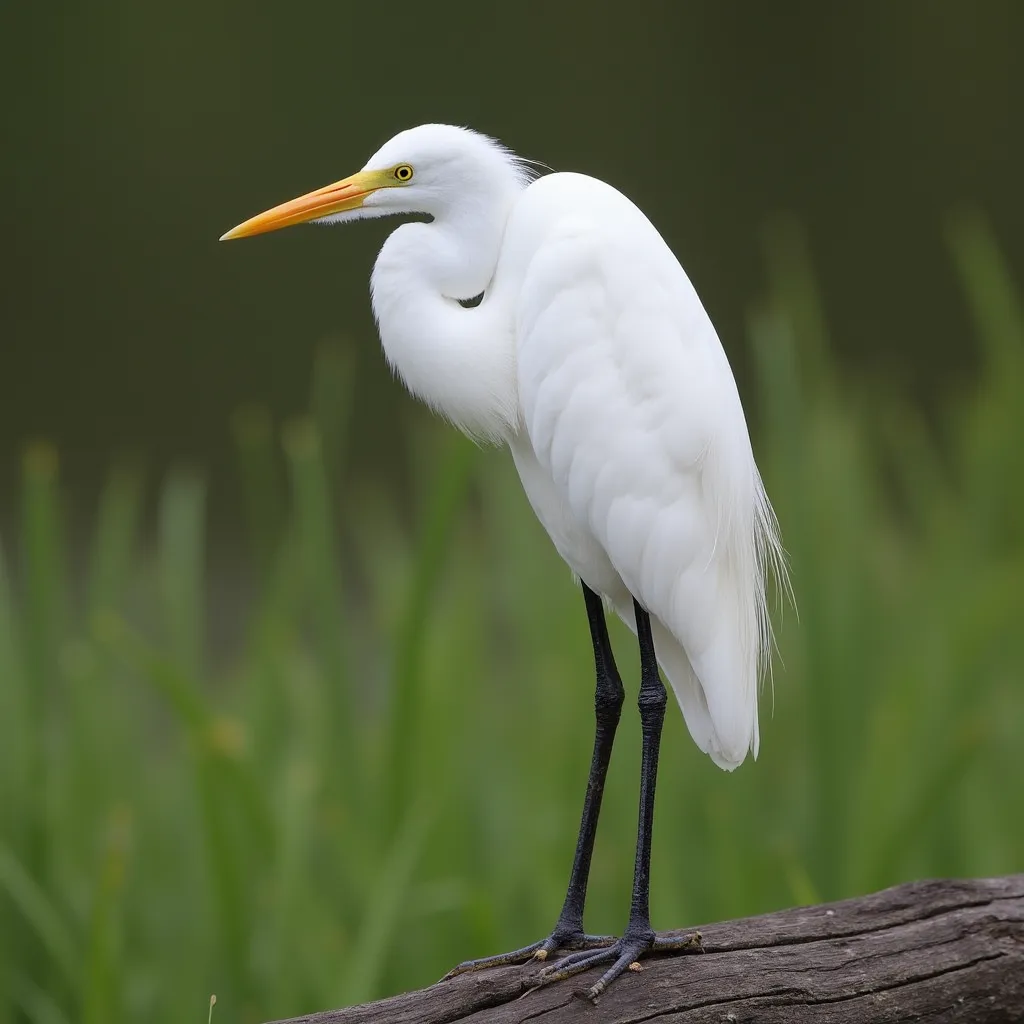
The Great Egret is a symbol of elegance in wetland ecosystems worldwide. This tall, slender bird is easily recognized by its all-white plumage, long neck, and distinctive yellow bill.
Great Egrets are skilled hunters, using their sharp eyesight and quick reflexes to catch fish, amphibians, and small mammals in shallow waters.
During breeding season, these birds develop long, wispy plumes called aigrettes, which were once highly prized in the fashion industry, leading to severe population declines.
Conservation efforts in the early 20th century helped restore their numbers, making the Great Egret a success story in wildlife protection. These birds play a crucial role in wetland ecosystems as both predators and indicators of environmental health.
Their presence often signifies healthy, productive aquatic habitats. Great Egrets are also known for their graceful flight and striking courtship displays, making them a favorite among birdwatchers and photographers.
4. The Coastal-Dwelling White Ibis (Eudocimus albus)
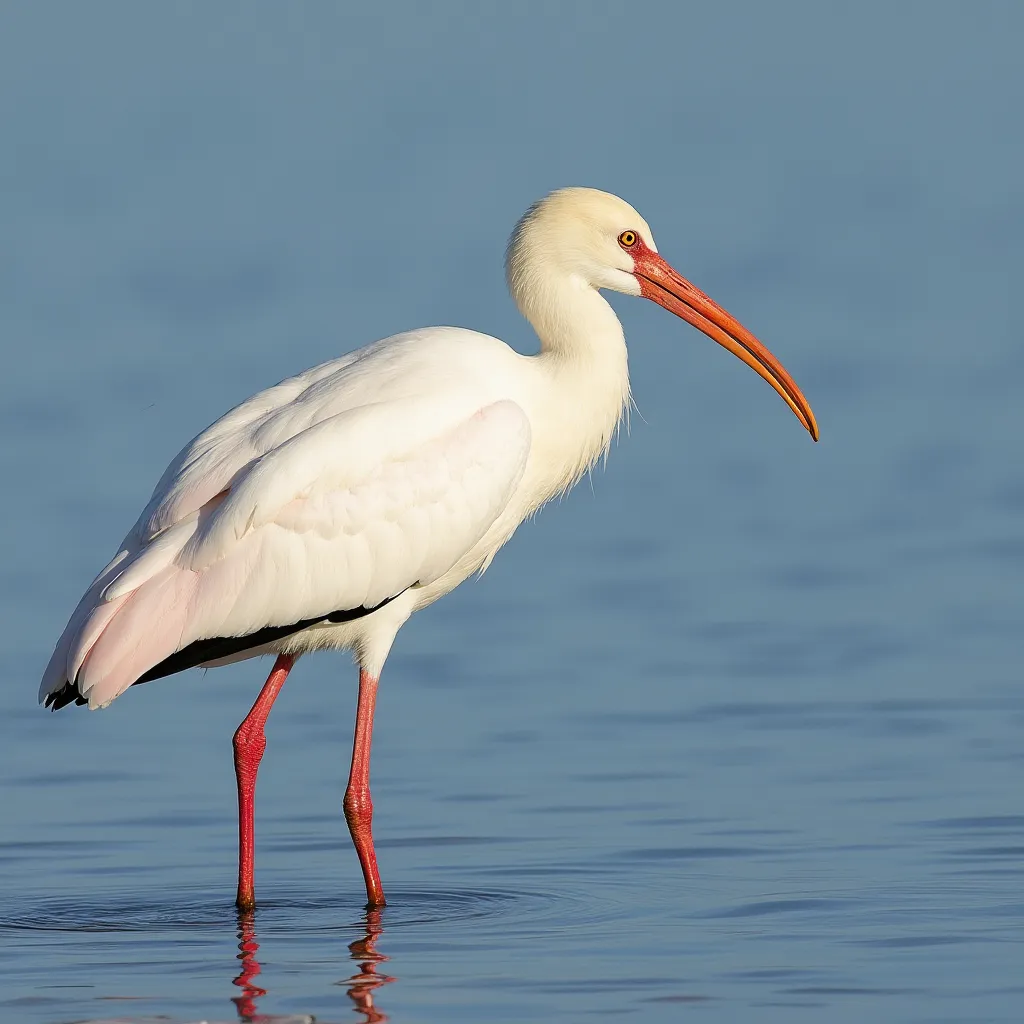
The White Ibis is a distinctive wading bird found in coastal areas and wetlands of the Americas. Known for its curved, red bill and white plumage, this bird is a common sight in marshes, swamps, and mangrove forests.
White Ibises are highly social, often seen foraging in large groups and nesting in colonies. Their unique feeding method involves probing mud and shallow water with their sensitive bills to locate prey such as crustaceans, small fish, and insects.
These birds play a crucial role in their ecosystems, not only as predators but also as indicators of environmental health. Changes in White Ibis populations can signal shifts in wetland conditions.
During breeding season, adult White Ibises develop vibrant pink skin on their faces, adding to their striking appearance. Conservation efforts for this species focus on protecting wetland habitats and managing water levels in their foraging areas.
5. The Pelagic Northern Gannet (Morus bassanus)

The Northern Gannet is a magnificent seabird known for its impressive diving abilities and striking white plumage. These large birds spend most of their lives at sea, coming to land only to breed in large colonies on coastal cliffs.
Northern Gannets are easily identified by their bright white bodies, black-tipped wings, and pale yellow heads. Their most remarkable feature is their hunting technique: they plunge-dive from heights of up to 100 feet, entering the water at high speeds to catch fish.
This spectacular diving ability is made possible by special air sacs under their skin and a reinforced skull. Northern Gannets are monogamous, often mating for life, and engage in elaborate courtship rituals.
Conservation concerns for this species include overfishing, which affects their food supply, and marine pollution. Studying Northern Gannets provides valuable insights into ocean health and the impacts of climate change on marine ecosystems.
6. The Iconic American White Pelican (Pelecanus erythrorhynchos)

The American White Pelican is one of North America’s largest birds, known for its massive wingspan and distinctive pouch-like bill. These birds are easily recognized by their pure white plumage and black flight feathers, visible only when their wings are spread.
Unlike their brown pelican cousins, American White Pelicans do not dive for fish. Instead, they work cooperatively, swimming in groups to herd fish into shallow waters where they can be easily scooped up.
During breeding season, these pelicans develop a unique horn-like projection on their bills, adding to their striking appearance. American White Pelicans are migratory, breeding in inland lakes and wetlands of North America and wintering in coastal areas and warmer southern regions.
Conservation efforts for this species focus on protecting breeding sites and managing water levels in their habitats. The American White Pelican’s impressive size and unique feeding behavior make it a favorite among birdwatchers and a crucial species in wetland ecosystems.
7. The Tropical Cattle Egret (Bubulcus ibis)
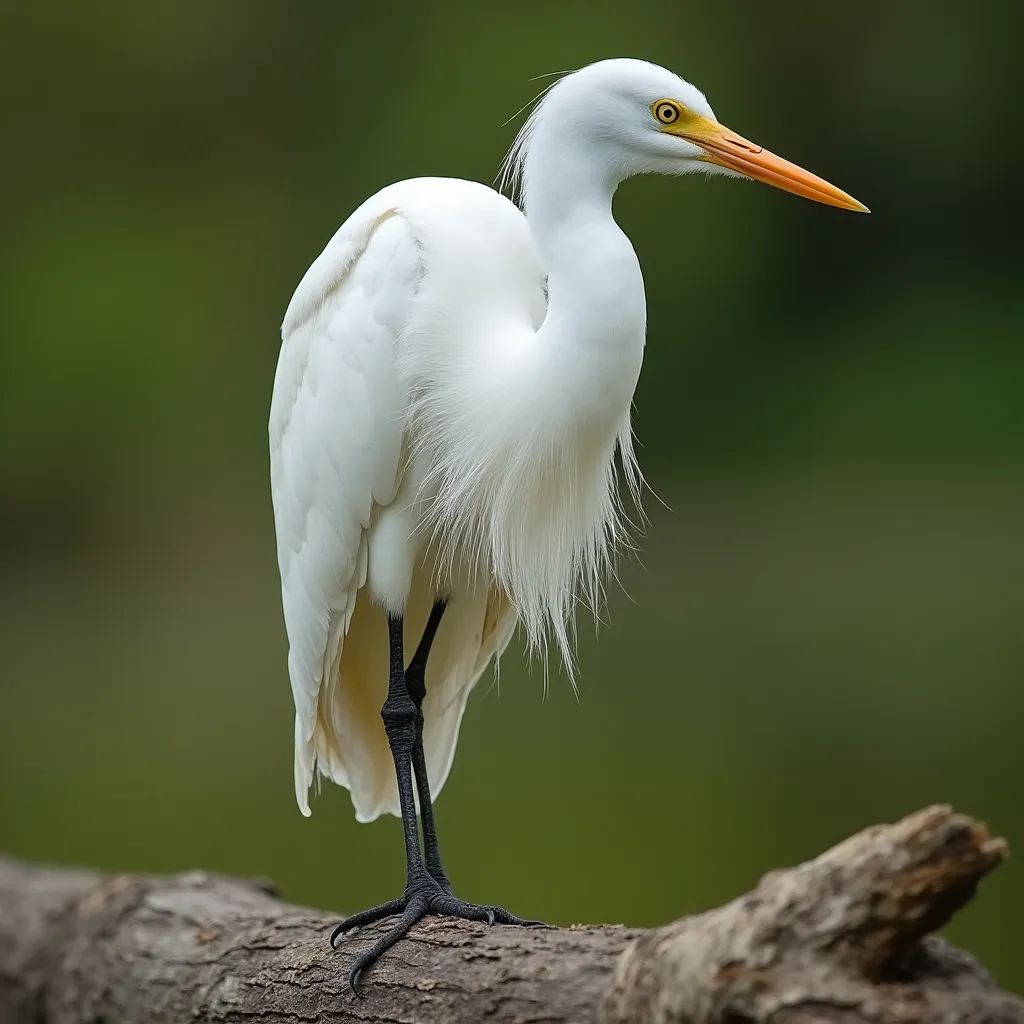
The Cattle Egret, despite its name, is not closely related to other egrets but belongs to the heron family. This small white bird is known for its unique relationship with large grazing animals, often seen perched on cattle, horses, or other livestock.
Cattle Egrets are native to Africa but have successfully expanded their range to almost every continent, making them one of the most widespread bird species. Their diet primarily consists of insects stirred up by grazing animals, but they also eat small vertebrates and even fish.
During breeding season, Cattle Egrets develop buff-colored plumes on their heads, backs, and chests, adding to their charm. These birds are highly adaptable and have thrived in human-altered landscapes, often seen in agricultural fields and urban areas.
While their global population is stable, localized conservation efforts focus on protecting their breeding colonies and maintaining suitable foraging habitats.
8. The Arctic-Nesting Ivory Gull (Pagophila eburnea)
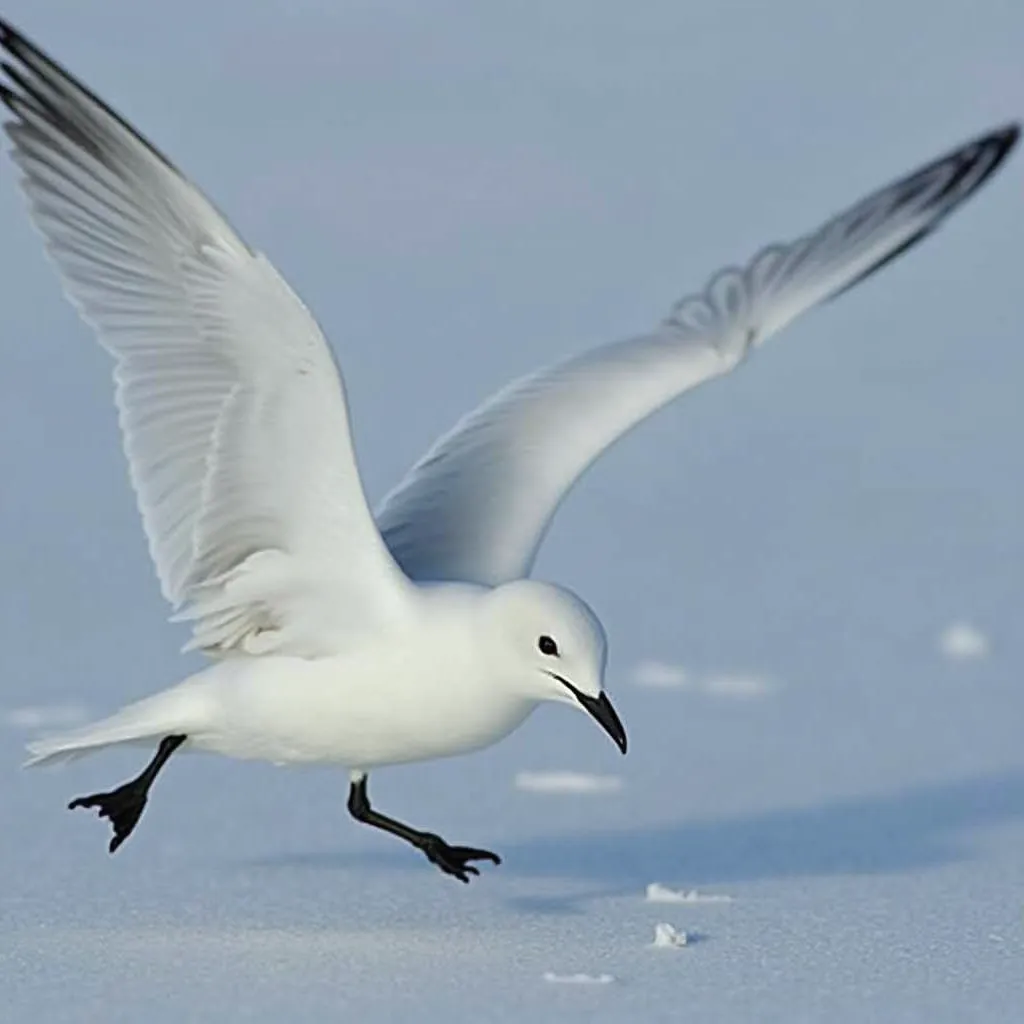
The Ivory Gull is a rare and beautiful bird of the High Arctic, known for its pure white plumage and black eyes. This medium-sized gull is one of the few birds that spends its entire life in the Arctic regions, rarely venturing south even in winter.
Ivory Gulls are well-adapted to their harsh environment, with feathered legs and a preference for areas with sea ice. They have a diverse diet, feeding on fish, marine invertebrates, and even scavenging on marine mammal carcasses.
During breeding season, Ivory Gulls nest on remote cliff faces or flat ground in some of the northernmost land areas on Earth. The species faces significant challenges due to climate change, which is rapidly altering their Arctic habitat.
Conservation efforts for Ivory Gulls focus on protecting their breeding sites and studying the impacts of environmental changes on their population. The Ivory Gull’s unique adaptations and its role in Arctic ecosystems make it a species of great interest to researchers and conservationists.
9. The Elegant Great White Heron (Ardea herodias occidentalis)

The Great White Heron, often considered a white morph of the Great Blue Heron, is a majestic wading bird found primarily in the Florida Keys and parts of the Caribbean. This large, all-white bird is distinguished by its yellow bill and pale legs, setting it apart from other white herons and egrets.
Great White Herons are skilled hunters, using their sharp eyesight and quick reflexes to catch fish, crustaceans, and small animals in shallow waters. They are typically solitary birds but may gather in small groups during breeding season.
Unlike many other herons, Great White Herons often nest in isolated pairs rather than large colonies. Conservation efforts for this subspecies focus on protecting coastal habitats and mangrove ecosystems crucial for their survival.
The Great White Heron’s limited range and specific habitat requirements make it particularly vulnerable to environmental changes, highlighting the importance of ongoing research and conservation initiatives.
10. The Tundra-Dwelling Snow Goose (Anser caerulescens)
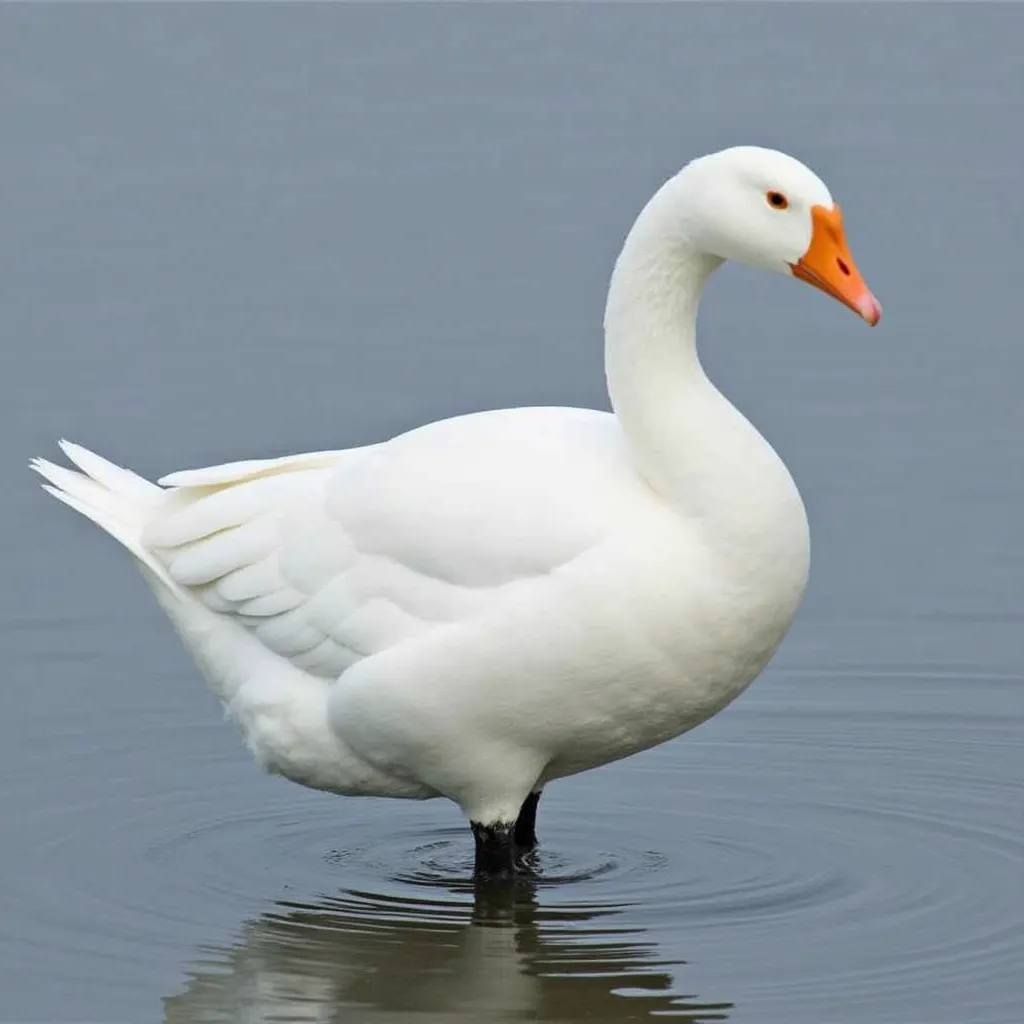
The Snow Goose is a striking bird known for its white plumage and black wingtips, though a dark morph also exists. These medium-sized geese are famous for their long-distance migrations between Arctic breeding grounds and southern wintering areas.
Snow Geese are highly social birds, often seen in massive flocks that can number in the thousands. Their diet consists primarily of plant material, including grasses, sedges, and grains. During breeding season, Snow Geese form monogamous pairs and nest in large colonies on the Arctic tundra.
One of the most remarkable aspects of Snow Goose biology is their ability to adapt to changing environments, which has led to significant population growth in recent decades.
This population boom has raised concerns about overgrazing in some areas, leading to complex management challenges. Conservation efforts for Snow Geese focus on maintaining healthy population levels and protecting critical habitats along their migration routes.
11. The Coastal Rock Ptarmigan (Lagopus muta)
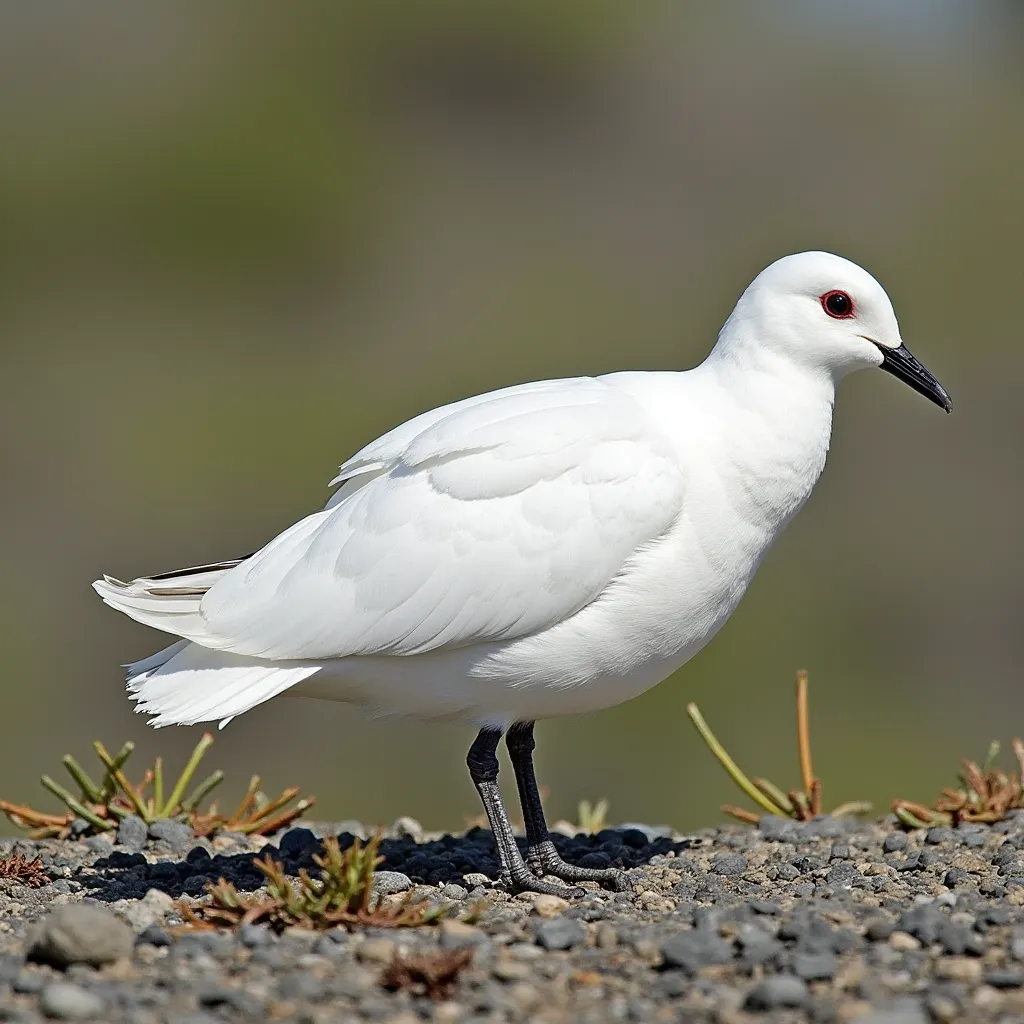
The Rock Ptarmigan is a master of camouflage, changing its plumage color with the seasons. In winter, these grouse-like birds are almost entirely white, blending perfectly with snowy landscapes.
Their summer plumage is mottled brown, providing excellent camouflage among rocks and tundra vegetation. Rock Ptarmigans are well-adapted to harsh Arctic and alpine environments, with feathered feet that act like snowshoes and provide insulation.
These birds are primarily herbivorous, feeding on buds, leaves, and berries, but will also eat insects when available. Rock Ptarmigans are known for their distinctive, guttural calls and interesting courtship displays.
Climate change poses a significant threat to these birds, as warming temperatures alter their habitat and potentially disrupt their camouflage strategies. Conservation efforts focus on monitoring populations and studying the impacts of climate change on their distribution and behavior.
12. The Wetland-Dwelling White Stork (Ciconia ciconia)
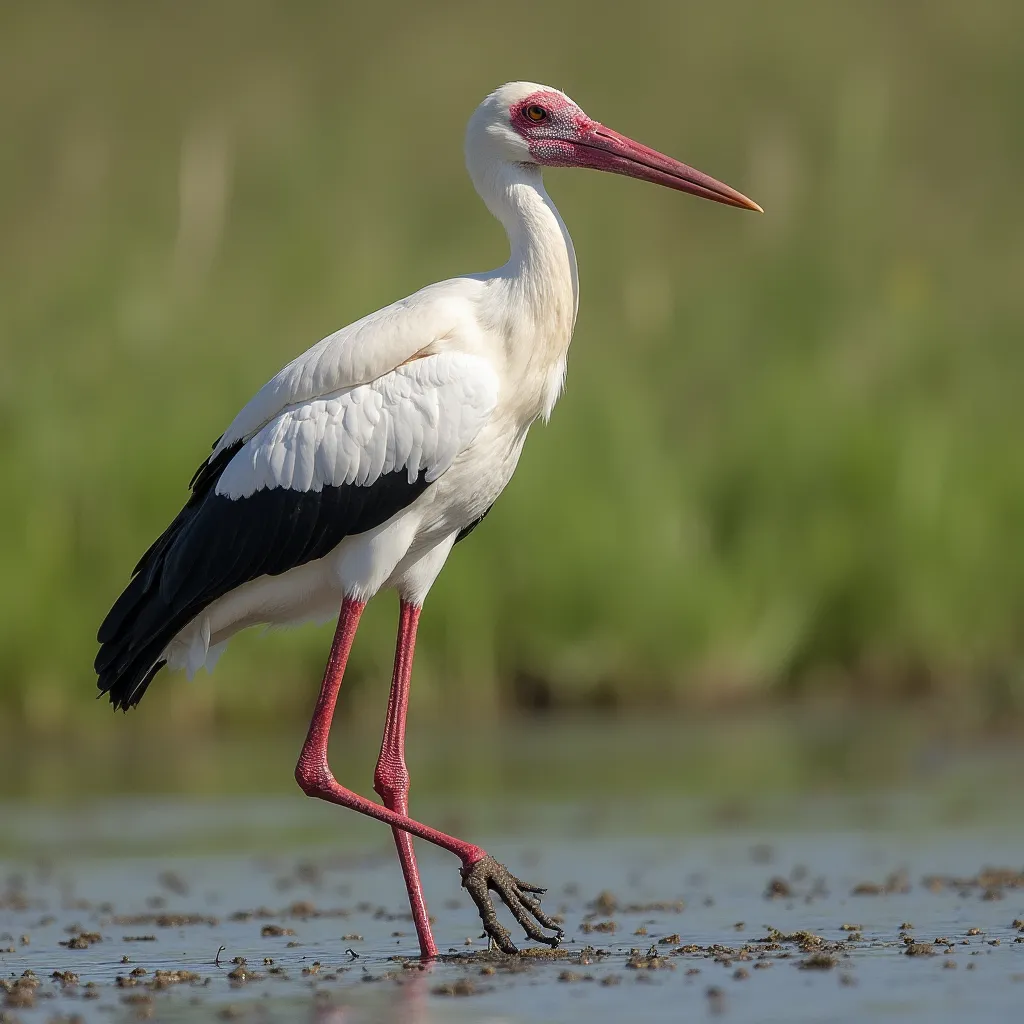
The White Stork is a large, distinctive bird known for its white body, black wing feathers, and long red legs and bill. These birds have a strong cultural significance in many European countries, often associated with good luck and fertility.
White Storks are migratory, breeding in Europe and parts of Asia before undertaking long journeys to winter in Africa. They are known for their preference for human-made structures for nesting, often building large nests on rooftops, chimneys, and specially constructed platforms.
White Storks are opportunistic feeders, consuming a wide variety of prey including insects, small mammals, reptiles, and amphibians. Conservation efforts have helped recover White Stork populations in many areas after significant declines in the 20th century.
These efforts include habitat protection, the creation of artificial nesting platforms, and addressing threats along migration routes. The White Stork’s close association with human settlements makes it an important species for public engagement in conservation.
FAQs
What is the largest white bird species?
The largest white bird species is the Wandering Albatross (Diomedea exulans), with a wingspan that can reach up to 11 feet (3.4 meters). Among the birds mentioned in this article, the American White Pelican is one of the largest, with a wingspan of up to 9 feet (2.7 meters).
Do all white birds stay white year-round?
No, not all white birds maintain their white plumage throughout the year. Some species, like the Rock Ptarmigan, change color seasonally for camouflage. Others, like the Cattle Egret, develop buff-colored plumes during breeding season.
Are white birds more vulnerable to predators?
While white plumage can make birds more visible in some environments, many white birds have adapted to use their coloration as camouflage, especially in snowy or bright environments. Some species, like the Snowy Owl, rely on their white plumage for hunting and avoiding detection.
How do white birds keep their feathers clean?
White birds maintain their plumage through regular preening, which involves using their beaks to clean and realign feathers. Many species also engage in bathing behaviors and produce oils from a gland near their tail to help waterproof and condition their feathers.
Are there any completely white bird species?
While many birds appear entirely white, most have some coloration on parts of their body, such as black wingtips or colored bills and legs. The Ivory Gull is one of the few birds that is almost entirely white as an adult.
How does climate change affect white bird species?
Climate change impacts white birds in various ways, including altering their habitats, affecting food availability, and disrupting migration patterns. Arctic-dwelling species like the Snowy Owl and Ivory Gull are particularly vulnerable to these changes.
What conservation efforts are in place to protect white bird species?
Conservation efforts for white birds include habitat protection, population monitoring, research on environmental impacts, and public education. Specific initiatives vary depending on the species and its particular challenges.
Can white birds see color?
Yes, most birds, including white species, can see color. In fact, many birds have tetrachromatic vision, meaning they can see four primary colors, including ultraviolet light, which is invisible to humans.
Do white birds have any special adaptations for their coloration?
Some white birds, especially those in Arctic environments, have adaptations like denser feathers for insulation. The white coloration itself can serve as camouflage in snowy environments or as a way to reflect sunlight and stay cool in warmer climates.
Are albino birds considered white birds?
While albino birds are white, they are not typically classified as “white birds” in the same way as naturally white species. Albinism is a genetic condition that results in a lack of pigmentation and is relatively rare in wild bird populations.

Hello, I’m Emily Price, the founder of Birds Affection. As a passionate bird enthusiast and spiritual seeker, I’ve always been fascinated by the symbolic meanings and mystical connections between birds and our lives. On this website, I share my knowledge and insights on the spiritual significance of various bird species, exploring their roles as messengers, guides, and teachers. Through my writing, I aim to inspire and educate others on the profound wisdom and beauty that birds bring to our world. Join me on this journey as we delve into the enchanting realm of bird symbolism and discover the hidden meanings behind these magnificent creatures.

